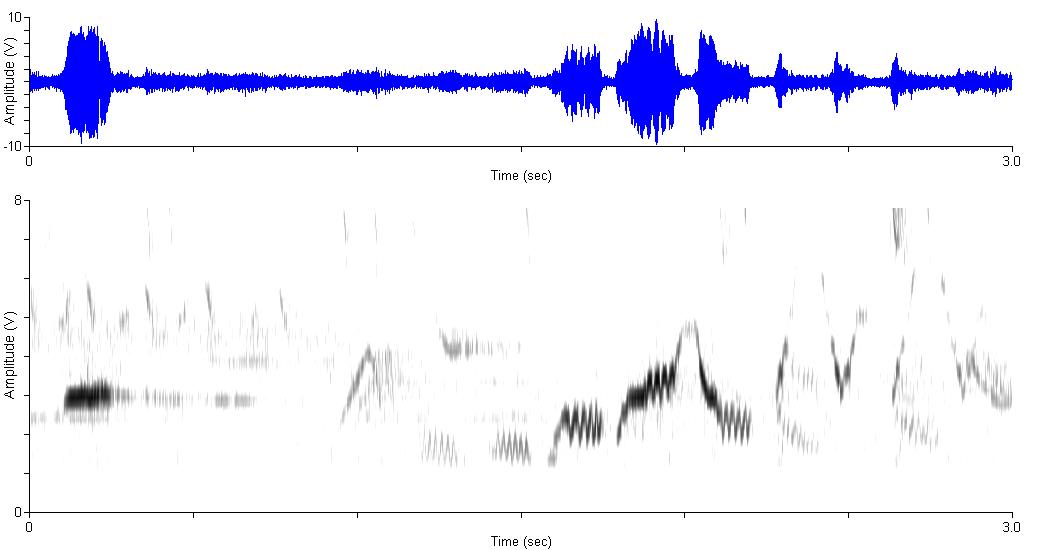The Swainson's Thrush sings on migration in North Carolina (I've recorded a few of these migrants myself.). But in mid-July, a singing bird could only be on a breeding territory. Marilyn Westphal tipped me off to these probable breeders in the Black Mountains, so I get no credit for finding them. But I do have something to add. The very faint initial note of each song is burry. The first obvious one of these is at 1:08; there's a doubleton at 2:19, which is duplicated at the bottom of this page. Pieplow's eastern guide (2017) doesn't draw attention to this character, but his western guide (2019) identifies it as diagnostic of the "Olive-backed" group of subspeces. These are the "eastern" populations that range all the way to the interior Pacific Northwest and Alaska in summer, but migrate to eastern North America before heading south to South America for the winter. So, not surprisingly, this one bird at least can be placed in the olive-backed group, as expected.
The Swainson's Thrush has apparently been moving southward in the Appalachians, like so many other species, including the Magnolia Warbler, the Yellow-rumped Warbler, and the Hermit Thrush. Why are they doing that in a time of global warming? It is counterintuitive, but here is my hypothesis. As the breeding ranges of these species followed the boreal conifers north with the receding glaciers some ten millenia ago, they passed the southern Appalachians by without settling, because the habitat there was not yet right for them. I have no data to support that conjecture, I'm posing it as a hypothesis. Now they are spreading southward in appropriate spruce-fir forest, but it is not an easy advance, because they have to jump over unsuitable habitat between West Virginia and Mt. Rogers in Virginia, and between there and the highest mountains of North Carolina and Tennessee. Remember, range expansion is accomplished by natal dispersal of offspring, not by migration. Migration has been taking these birds right over suitable habitat for millenia, but they are programmed to go back to near where they hatched. That is probably counterintutive too, but it seems to be the case. And it has worked fine for populating the earth with birds.
